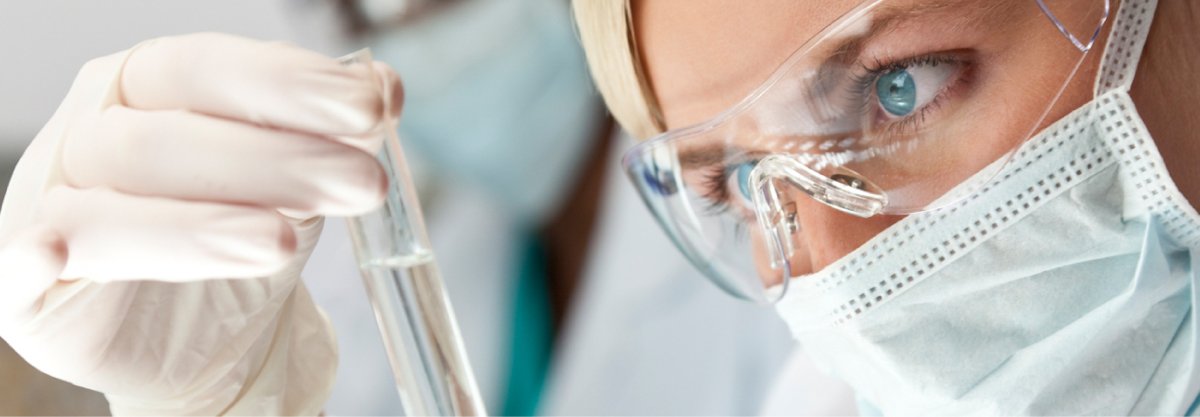 The biotech and biopharma industries utilize freezers to rapidly freeze and store thermally sensitive products such as vaccines and biopharmaceuticals as well as biological materials such as blood plasma. However, conventional compressor-based systems can take hours to reach an ultra-low target temperature, which slows production throughput.
The biotech and biopharma industries utilize freezers to rapidly freeze and store thermally sensitive products such as vaccines and biopharmaceuticals as well as biological materials such as blood plasma. However, conventional compressor-based systems can take hours to reach an ultra-low target temperature, which slows production throughput.
 UK-based testing, inspection and certification services provider the Element Materials Technology Group (Element) has announced that it will expand its cryogenic testing capacities at its Milan laboratory. By investing in new fatigue testing frames, Element will strengthen its position in both aerospace and the energy sector by offering testing for hydrogen industry applications.
UK-based testing, inspection and certification services provider the Element Materials Technology Group (Element) has announced that it will expand its cryogenic testing capacities at its Milan laboratory. By investing in new fatigue testing frames, Element will strengthen its position in both aerospace and the energy sector by offering testing for hydrogen industry applications.
Read More
Private Rocket Startup, Astrophel Aerospace, to Launch Rocket in Three Years; Initiates Testing of Cryogenic Engine
 Pune-based private rocket startup, Astrophel Aerospace, will soon test its cryogenic engine that would power its Astra rocket, said the promoters. "We have completed the injector cold and hot flow tests. The engine design has been completed, and soon testing will happen," Suyash Bafna, founder and CEO told IANS.
Pune-based private rocket startup, Astrophel Aerospace, will soon test its cryogenic engine that would power its Astra rocket, said the promoters. "We have completed the injector cold and hot flow tests. The engine design has been completed, and soon testing will happen," Suyash Bafna, founder and CEO told IANS.
Read More
The Magneto-Optic Modulator
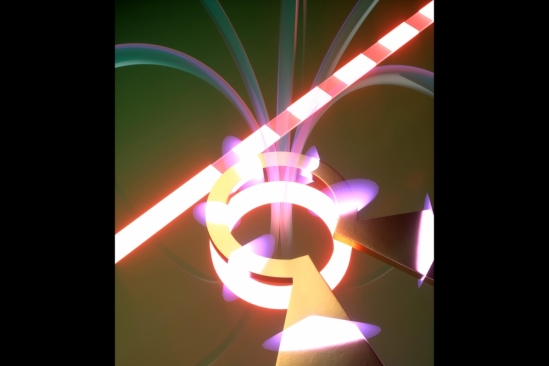 Many state-of-the-art technologies work at incredibly low temperatures. Superconducting microprocessors and quantum computers promise to revolutionize computation, but scientists need to keep them just above absolute zero (-459.67° Fahrenheit) to protect their delicate states. Still, ultra-cold components have to interface with room temperature systems, providing both a challenge and an opportunity for engineers.
Many state-of-the-art technologies work at incredibly low temperatures. Superconducting microprocessors and quantum computers promise to revolutionize computation, but scientists need to keep them just above absolute zero (-459.67° Fahrenheit) to protect their delicate states. Still, ultra-cold components have to interface with room temperature systems, providing both a challenge and an opportunity for engineers.
Read More
IBM Scientists Cool Down the World’s Largest Quantum-ready Cryogenic Concept System
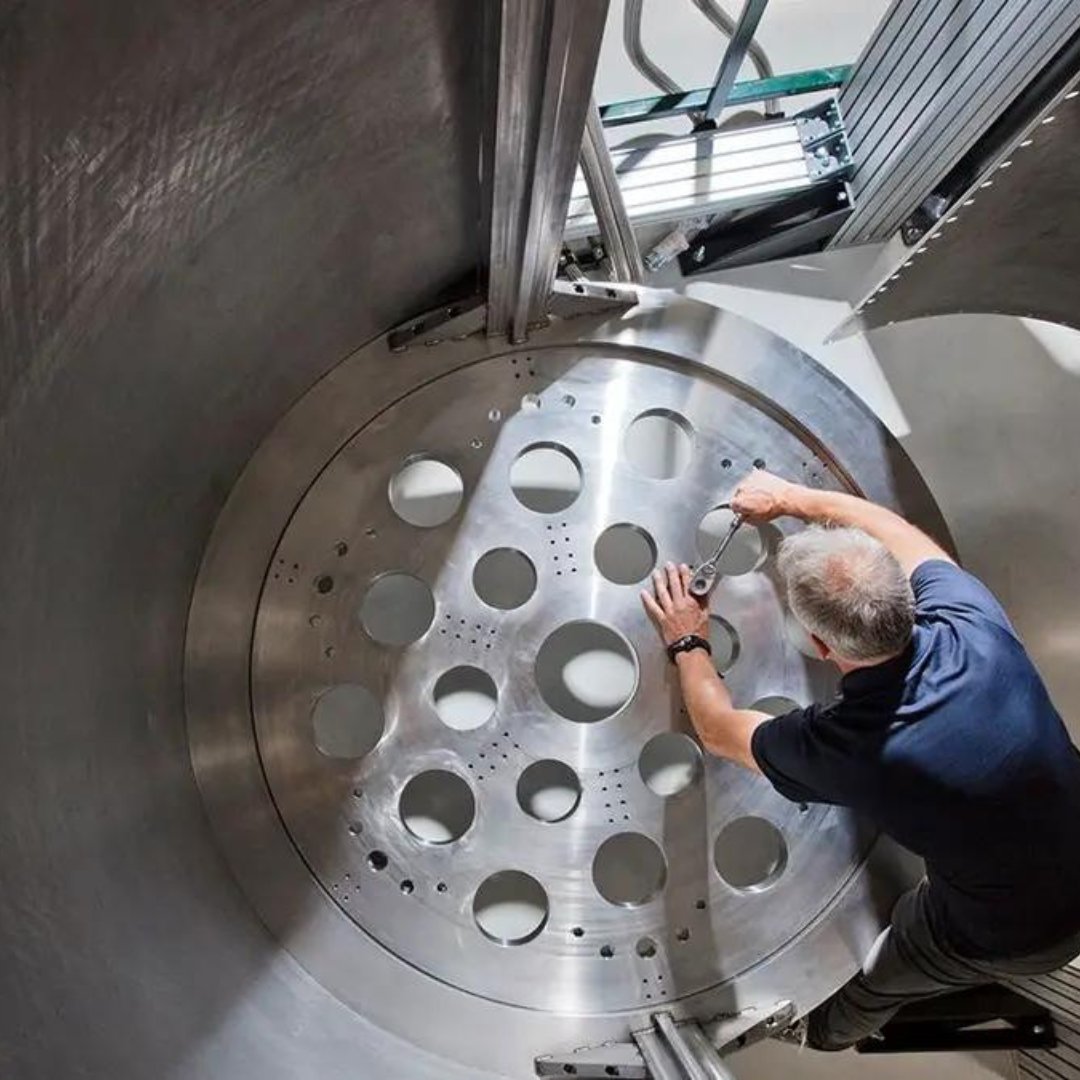 We create knowledge by exploring reality’s frontiers: we study the coldest, the furthest, the lowest and highest energies, and the smallest things in the universe. But reaching these frontiers is no small feat — typically, it requires building all-new apparatuses that push the limits of modern technology. That’s why we built the world’s largest dilution refrigerator by experimental volume.
We create knowledge by exploring reality’s frontiers: we study the coldest, the furthest, the lowest and highest energies, and the smallest things in the universe. But reaching these frontiers is no small feat — typically, it requires building all-new apparatuses that push the limits of modern technology. That’s why we built the world’s largest dilution refrigerator by experimental volume.
Read More
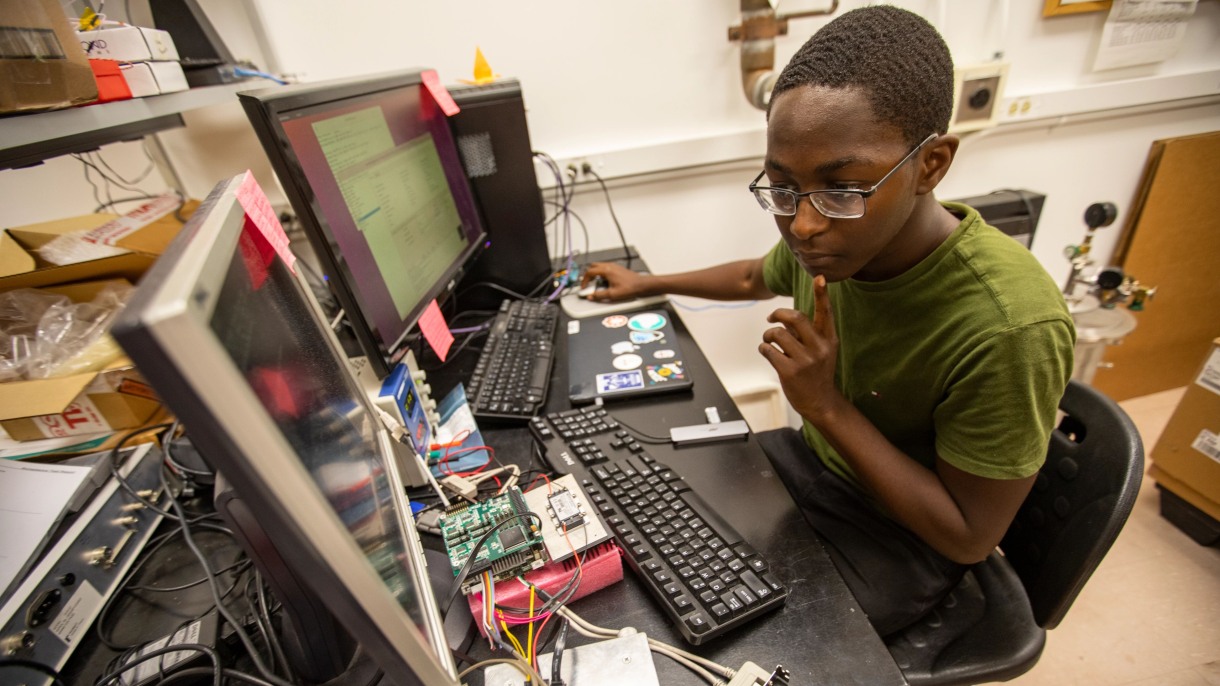 In July, as the world marveled at the first images of the Cosmic Cliffs and previously invisible areas of star birth revealed by the James Webb Space Telescope, Allen Dufort felt excited that he’d soon make his own contributions to space exploration. As a software engineer intern, Dufort is supporting Brown University Professor of Physics Gregory Tucker's NASA-funded project to help build a telescope that will enable the study of distant planets. As part of the team, Dufort spent the summer of 2022 writing computer code for components of the telescope that the team from Brown is able to build, thanks to a grant from NASA.
In July, as the world marveled at the first images of the Cosmic Cliffs and previously invisible areas of star birth revealed by the James Webb Space Telescope, Allen Dufort felt excited that he’d soon make his own contributions to space exploration. As a software engineer intern, Dufort is supporting Brown University Professor of Physics Gregory Tucker's NASA-funded project to help build a telescope that will enable the study of distant planets. As part of the team, Dufort spent the summer of 2022 writing computer code for components of the telescope that the team from Brown is able to build, thanks to a grant from NASA.
Read More
![Illustration of gravitational waves produced by two orbiting black holes. [Credit: Henze/NASA] Illustration of gravitational waves produced by two orbiting black holes. [Credit: Henze/NASA]](https://cryo.memberclicks.net/assets/news/LIGO%20Gravitational%20Wave.jpg) Terrestrial Gravitational Wave Detectors
Terrestrial Gravitational Wave Detectors
Terrestrial gravitational wave detectors have been used to identify various gravitational wave sources. For example, researchers have detected potential black hole neutron star mergers, binary neutron star inspirals, and binary black hole mergers via the advanced Laser Interferometer Gravitational-wave Observatory (LIGO). The aLIGO detectors' most sensitive band is limited by thermal noise from the primary optics and quantum shot noise. The thermal noise is combated in the KAGRA detector via cooling its core optics.
Read More
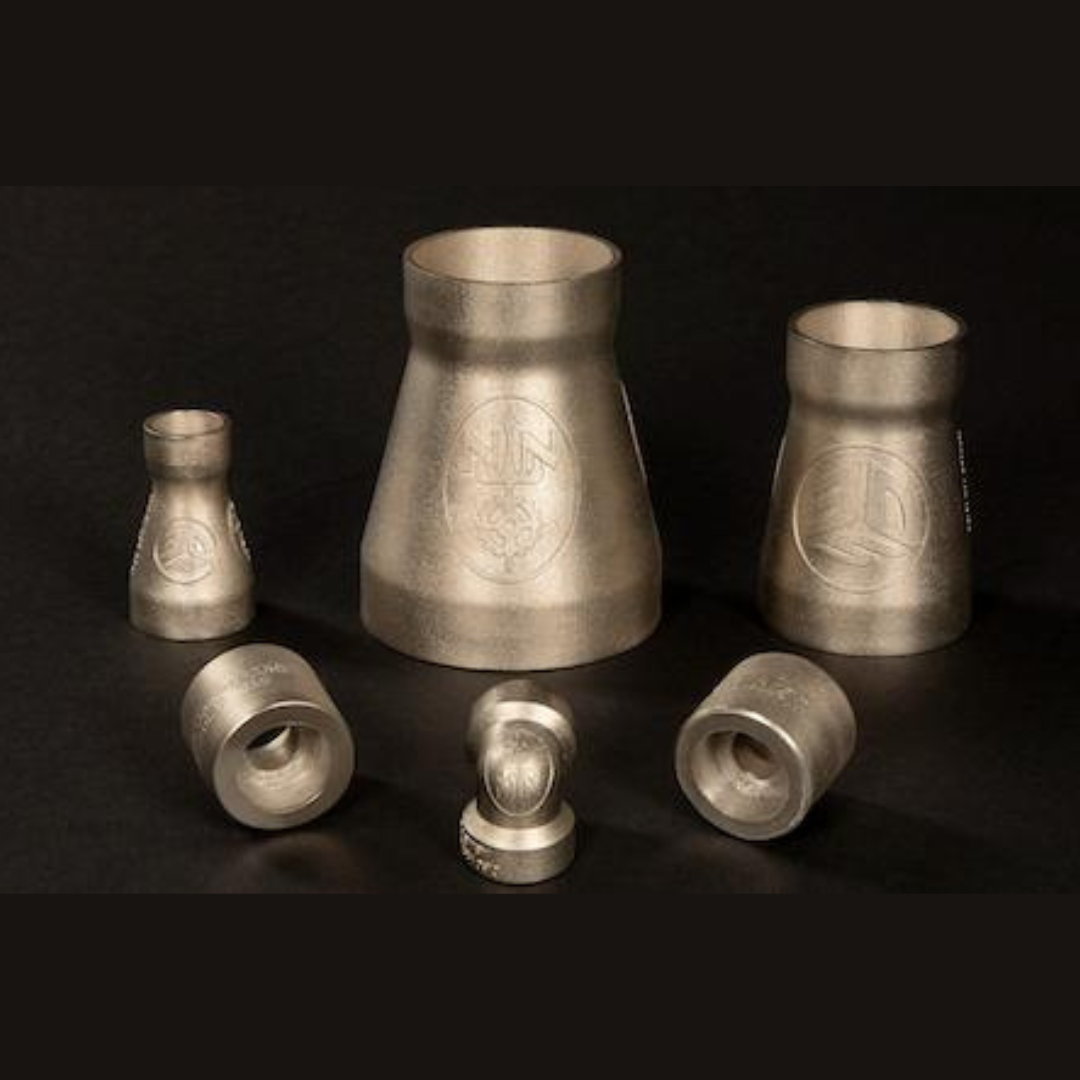 3D Systems has announced CuNi30 – a corrosion-resistant, copper-nickel alloy for use with its DMP Flex 350, metal additive manufacturing machine. The material is a result from the company’s collaboration with HII’s Newport News Shipbuilding division to develop materials and process parameters for the Laser Beam Powder Bed Fusion (PBF-LB) process.
3D Systems has announced CuNi30 – a corrosion-resistant, copper-nickel alloy for use with its DMP Flex 350, metal additive manufacturing machine. The material is a result from the company’s collaboration with HII’s Newport News Shipbuilding division to develop materials and process parameters for the Laser Beam Powder Bed Fusion (PBF-LB) process.
Read More
Nikkiso to Bring Hydrogen Fueling Stations to California, South Korea, and Germany
 Nikkiso Clean Energy & Industrial Gases Group was awarded multiple contracts for over a dozen locations. Nikkiso Clean Energy & Industrial Gases Group (CE&IG), a part of the Japanese company Nikkiso Co., Ltd group of companies, has announced that it was awarded several contracts for providing over a dozen hydrogen fueling stations that will be located in California, South Korea and Germany.
Nikkiso Clean Energy & Industrial Gases Group was awarded multiple contracts for over a dozen locations. Nikkiso Clean Energy & Industrial Gases Group (CE&IG), a part of the Japanese company Nikkiso Co., Ltd group of companies, has announced that it was awarded several contracts for providing over a dozen hydrogen fueling stations that will be located in California, South Korea and Germany.
Read More
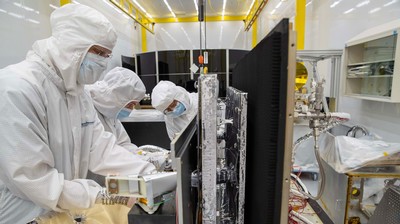 Utah State University’s Space Dynamics Laboratory (USU SDL) announced in May 2022 that it has delivered a critical subsystem to NASA’s Jet Propulsion Laboratory (JPL) for integration onto the Nancy Grace Roman Space Telescope. The Cryogenic Thermal Subsystem for the Roman Coronagraph Instrument was delivered to JPL at SDL’s facilities on USU’s Innovation Campus.
Utah State University’s Space Dynamics Laboratory (USU SDL) announced in May 2022 that it has delivered a critical subsystem to NASA’s Jet Propulsion Laboratory (JPL) for integration onto the Nancy Grace Roman Space Telescope. The Cryogenic Thermal Subsystem for the Roman Coronagraph Instrument was delivered to JPL at SDL’s facilities on USU’s Innovation Campus.
Read More
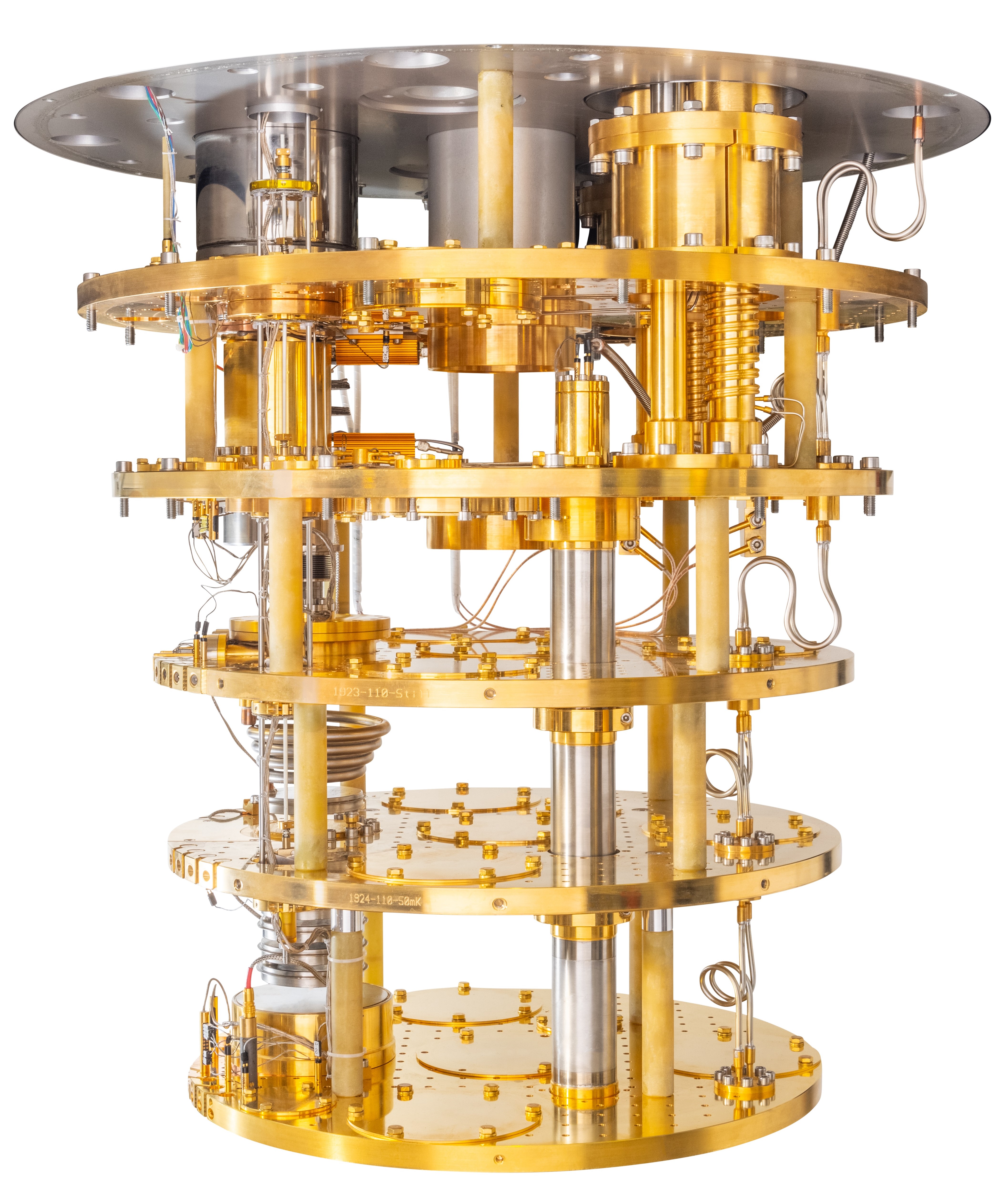 After 25 years in the high-tech cryogenics field, while employed at Cryogenic Technical Services (CTS) and High Precision Devices (HPD) and working with some of the best scientific minds in the world, Charlie Danaher started Danaher Cryogenics in early 2022 to respond to the ever-increasing demand for elegant, collaborative solutions to address the new cryogenic challenges. To paint a picture of Danaher Cryogenics’ offerings, a brief review of Charlie’s experience is in order.
After 25 years in the high-tech cryogenics field, while employed at Cryogenic Technical Services (CTS) and High Precision Devices (HPD) and working with some of the best scientific minds in the world, Charlie Danaher started Danaher Cryogenics in early 2022 to respond to the ever-increasing demand for elegant, collaborative solutions to address the new cryogenic challenges. To paint a picture of Danaher Cryogenics’ offerings, a brief review of Charlie’s experience is in order.
Read More
Cryogenic Bubble Interaction: Challenges, Motivation and Potential Benefits in Cryosurgery
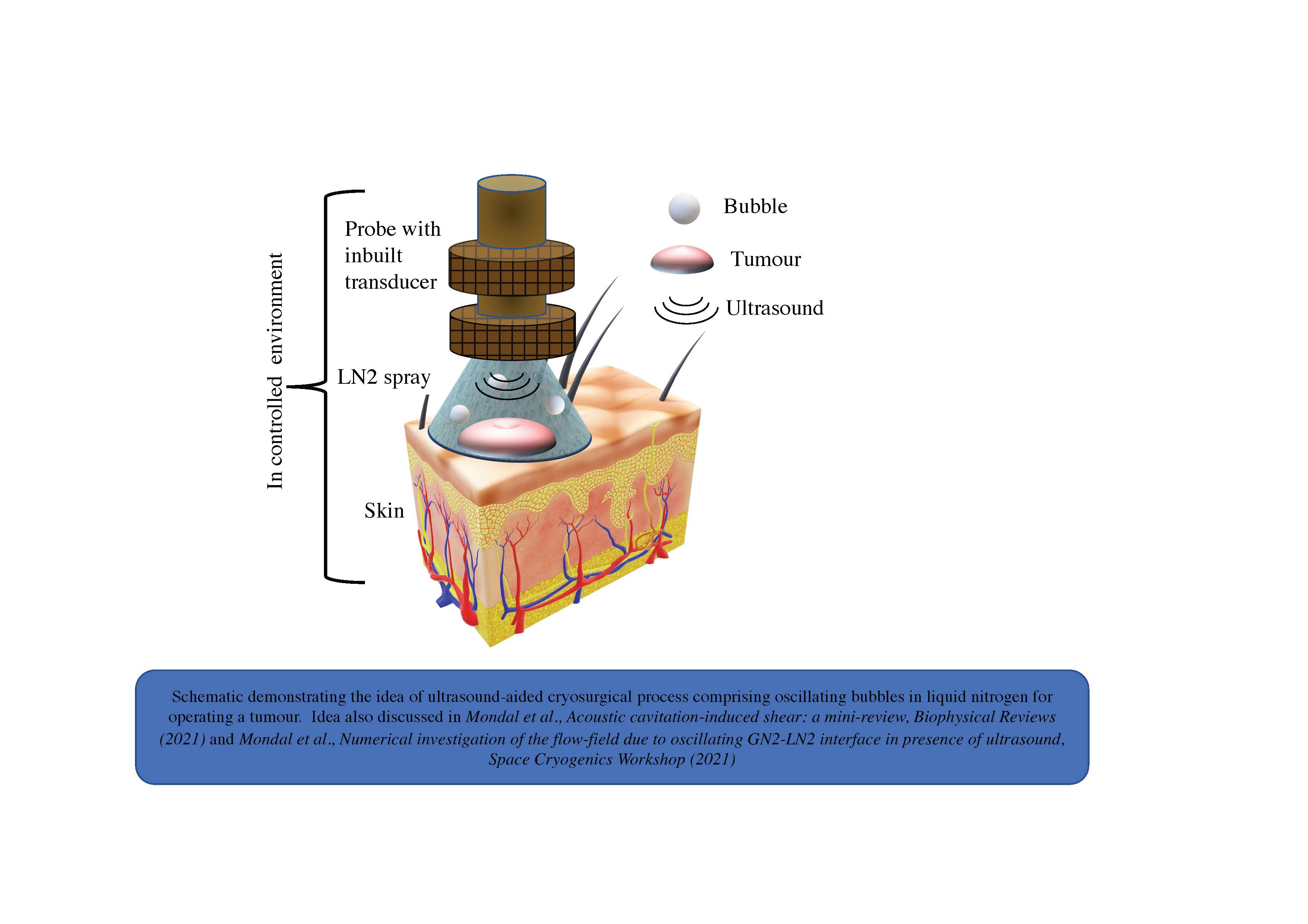 Cryogenic fluid management systems use pumps, turbines, pipes (chilldown lines), valves/orifice, etc., operating at very low temperatures (below 120 K) that are at considerable risk of heat-inleak from ambient surroundings (300 K). This leads to the development of a multiphase environment, consisting of both liquid and vapor, and manifests as several bubbles that undergo intense growth and collapse (commonly known as cavitation). Cavitation damage is a well-known risk to equipment, often causing the failure of the entire cryogenic system. However, bubbles in cryogenic systems need not always be a threat. Our investigation reveals the useful nature of bubble oscillation and its potential for specific applications at liquid nitrogen (LN2) temperature.
Cryogenic fluid management systems use pumps, turbines, pipes (chilldown lines), valves/orifice, etc., operating at very low temperatures (below 120 K) that are at considerable risk of heat-inleak from ambient surroundings (300 K). This leads to the development of a multiphase environment, consisting of both liquid and vapor, and manifests as several bubbles that undergo intense growth and collapse (commonly known as cavitation). Cavitation damage is a well-known risk to equipment, often causing the failure of the entire cryogenic system. However, bubbles in cryogenic systems need not always be a threat. Our investigation reveals the useful nature of bubble oscillation and its potential for specific applications at liquid nitrogen (LN2) temperature.
Read More
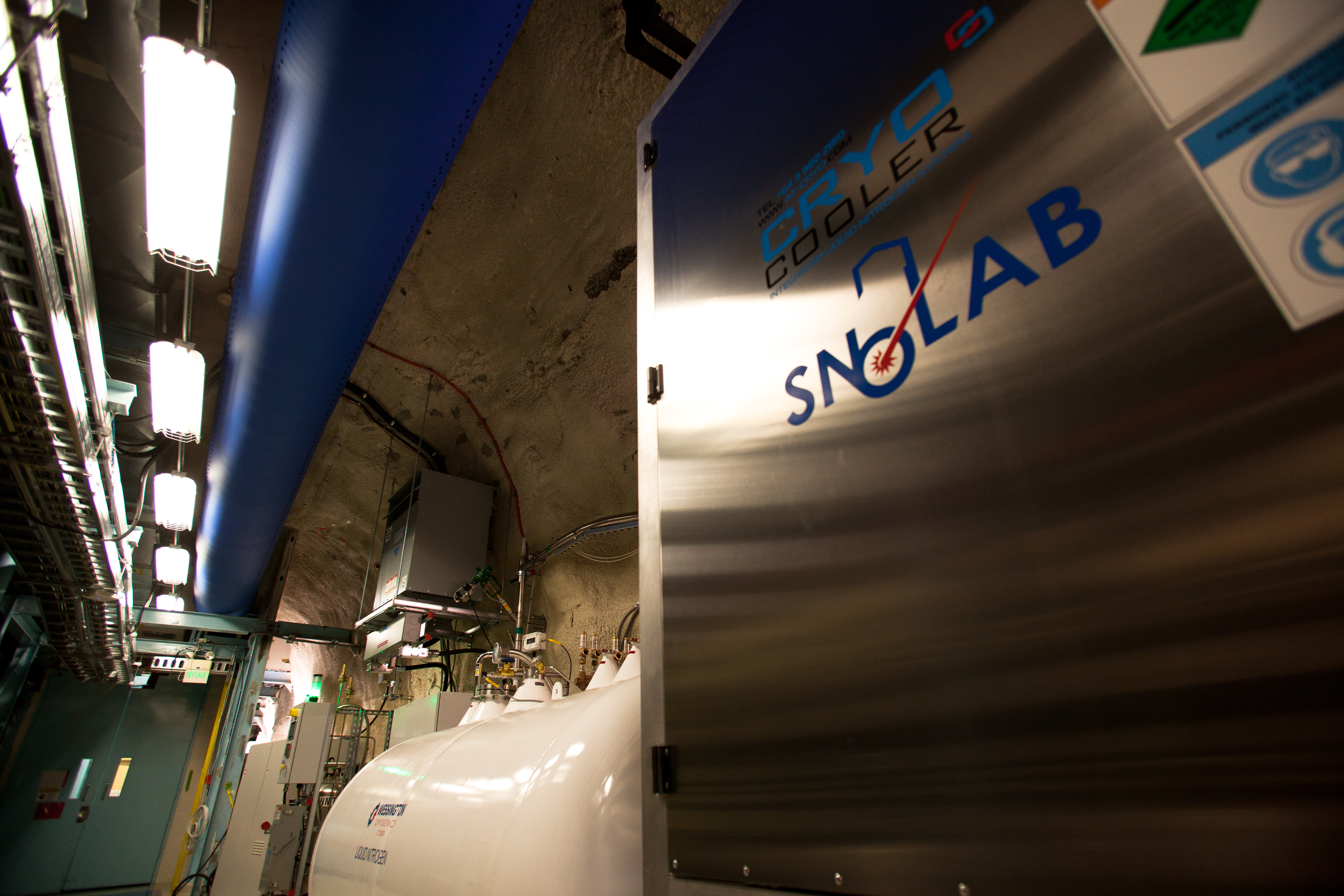 SNOLAB is Canada’s deep underground research laboratory, located two kilometers underground in Vale’s Creighton mine near Sudbury, Ontario, Canada. SNOLAB is a unique facility, providing a low background environment designed for scientific research and operates a 5,000m2 underground campus as a class-2000 clean lab. While the science program is focused on astroparticle physics, the location is also well suited to biology, geology and low radiological studies.
SNOLAB is Canada’s deep underground research laboratory, located two kilometers underground in Vale’s Creighton mine near Sudbury, Ontario, Canada. SNOLAB is a unique facility, providing a low background environment designed for scientific research and operates a 5,000m2 underground campus as a class-2000 clean lab. While the science program is focused on astroparticle physics, the location is also well suited to biology, geology and low radiological studies.
Read More
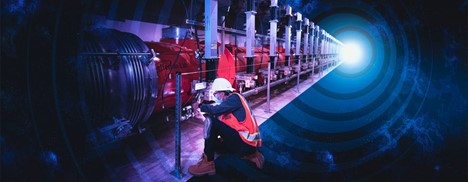 A half-mile-long tunnel under Menlo Park, Calif., has become colder than most of the universe because of a particle accelerator that slams electrons together here on Earth. Using the X-ray free-electron laser at the Department of Energy's SLAC National Accelerator Laboratory – part of an upgrade project to the Linac Coherent Light Source (LCLS) called LCLS II – scientists chilled liquid helium to -456 °F (-271 °C). That is just 2 kelvins above absolute zero, the coldest possible temperature at which all particle movement ceases. That frosty environment is crucial for the accelerator because at such low temperatures, the machine becomes superconducting, meaning it can boost electrons through it with near zero energy loss. Even empty regions of space aren't this cold, as they are still filled with the cosmic microwave background radiation, a remnant from shortly after the Big Bang that has a uniform temperature of -454 °F (-271 °C or 3 K).
A half-mile-long tunnel under Menlo Park, Calif., has become colder than most of the universe because of a particle accelerator that slams electrons together here on Earth. Using the X-ray free-electron laser at the Department of Energy's SLAC National Accelerator Laboratory – part of an upgrade project to the Linac Coherent Light Source (LCLS) called LCLS II – scientists chilled liquid helium to -456 °F (-271 °C). That is just 2 kelvins above absolute zero, the coldest possible temperature at which all particle movement ceases. That frosty environment is crucial for the accelerator because at such low temperatures, the machine becomes superconducting, meaning it can boost electrons through it with near zero energy loss. Even empty regions of space aren't this cold, as they are still filled with the cosmic microwave background radiation, a remnant from shortly after the Big Bang that has a uniform temperature of -454 °F (-271 °C or 3 K).
Read More
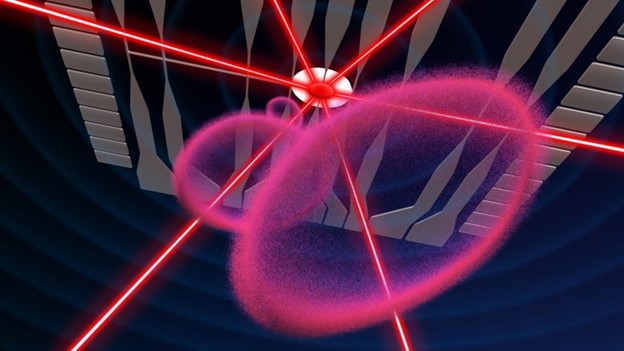 Since the days of NASA’s Apollo program, astronauts have documented (and contended with) how liquids like water behave differently in microgravity than they do on Earth – coalescing into floating spheres instead of bottom-heavy droplets. Now, researchers have demonstrated this effect with a much more exotic material: gas cooled to nearly absolute zero (-459 ºF or -273 ºC), the lowest temperature matter can reach.
Since the days of NASA’s Apollo program, astronauts have documented (and contended with) how liquids like water behave differently in microgravity than they do on Earth – coalescing into floating spheres instead of bottom-heavy droplets. Now, researchers have demonstrated this effect with a much more exotic material: gas cooled to nearly absolute zero (-459 ºF or -273 ºC), the lowest temperature matter can reach.
Read More
Artemis Updates: Teams Continue to Review Options for Next Attempt, Prepare to Replace Seal and Replenish Liquid Hydrogen Loading Operations
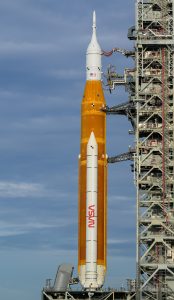 After standing down on the Artemis I launch attempt Saturday, Sept. 3 due to a hydrogen leak, teams have decided to replace the seal on an interface, called the quick disconnect, between the liquid hydrogen fuel feed line on the mobile launcher and the Space Launch System (SLS) rocket while at the launch pad.
After standing down on the Artemis I launch attempt Saturday, Sept. 3 due to a hydrogen leak, teams have decided to replace the seal on an interface, called the quick disconnect, between the liquid hydrogen fuel feed line on the mobile launcher and the Space Launch System (SLS) rocket while at the launch pad.
Read More
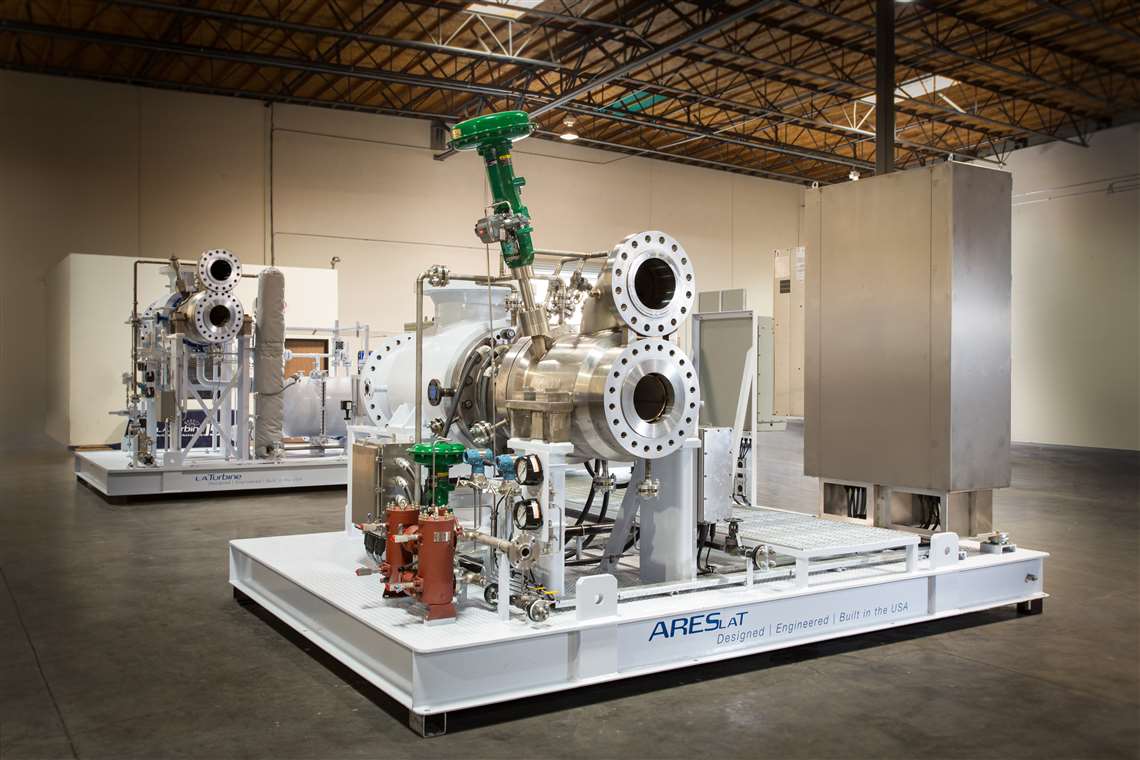 With the energy sector looking to decarbonize, the transition away from hydrocarbons is underway, with hydrogen taking center stage in many of the industry’s roadmaps. Georgia-based Chart Industries (NYSE: GTLS) has responded to this interest by bolstering its offering of products and technologies that enable the industry to move away from hydrocarbons and toward clean energy solutions.
With the energy sector looking to decarbonize, the transition away from hydrocarbons is underway, with hydrogen taking center stage in many of the industry’s roadmaps. Georgia-based Chart Industries (NYSE: GTLS) has responded to this interest by bolstering its offering of products and technologies that enable the industry to move away from hydrocarbons and toward clean energy solutions.
Read More
 After three years of design and construction, a monthlong boat ride across the Pacific Ocean, and a lift from a 30-ton crane, the customized test chamber for NASA’s upcoming SPHEREx mission has finally reached its destination at Caltech’s Cahill Center for Astronomy and Astrophysics in Pasadena.
After three years of design and construction, a monthlong boat ride across the Pacific Ocean, and a lift from a 30-ton crane, the customized test chamber for NASA’s upcoming SPHEREx mission has finally reached its destination at Caltech’s Cahill Center for Astronomy and Astrophysics in Pasadena.
Read More
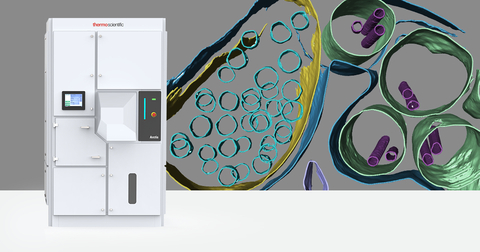 Thermo Fisher Scientific Inc. unveiled the Thermo Scientific Arctis Cryo-Plasma Focused Ion Beam (Cryo-PFIB), a new connected and automated microscope designed to advance the pace of cryo-electron tomography (cryo-ET) research. Cryo-ET makes it possible to study how proteins and other molecules operate together in a cellular context, at resolutions unsurpassed by other microscopy techniques, and has enormous potential for cell biology research, including the study of infectious disease, neurodegenerative disease, and other globally impactful structural biology applications. However, the process of preparing optimal samples for cryo-ET is still time-consuming and complex.
Thermo Fisher Scientific Inc. unveiled the Thermo Scientific Arctis Cryo-Plasma Focused Ion Beam (Cryo-PFIB), a new connected and automated microscope designed to advance the pace of cryo-electron tomography (cryo-ET) research. Cryo-ET makes it possible to study how proteins and other molecules operate together in a cellular context, at resolutions unsurpassed by other microscopy techniques, and has enormous potential for cell biology research, including the study of infectious disease, neurodegenerative disease, and other globally impactful structural biology applications. However, the process of preparing optimal samples for cryo-ET is still time-consuming and complex.
Read More
 Around a mile below the surface in South Dakota, construction crews are hard at work excavating around 1,000 tons of rock per day. Their goal is to make room for a large underground facility that will house an international effort aimed at studying neutrinos—highly elusive subatomic particles that may hold the key to many of the universe’s secrets.
Around a mile below the surface in South Dakota, construction crews are hard at work excavating around 1,000 tons of rock per day. Their goal is to make room for a large underground facility that will house an international effort aimed at studying neutrinos—highly elusive subatomic particles that may hold the key to many of the universe’s secrets.


